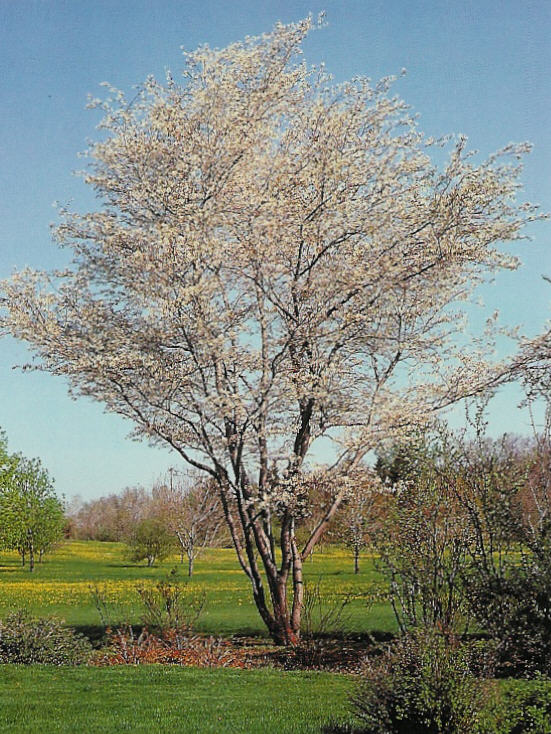| Botanical Name: Amelanchier x grandiflora | |
| Common Name: Apple Serviceberry |

-
Anatomy
-
Culture
-
Design
Plant Type
Tree, Shrub
Height Range
12-25'
Flower Color
White
Flower Season
Spring
Leaf Color
Green
Bark Color
Grey
Fruit Color
Blue, Purple
Fruit Season
Summer
Sun
Full, Half, Shade
Water
Low, Medium
Growth Rate
Moderate
Soil Type
Clay, Loam, Rocky, Unparticular
Soil Condition
Average, Rich, Poor, Well-drained, Dry
Soil pH
Acid, Neutral, Basic
Adverse Factors
Attracts Bees
Design Styles
Formal, Meadow, Ranch, Native Garden, Woodland
Accenting Features
Fall Color, Multi-trunk Tree, Showy Flowers, Specimen
Seasonal Interest
Spring, Summer, Fall
Location Uses
Background, Entry, Shrub Border, Foundation, Patio, Walls / Fences
Special Uses
Screen, Mass Planting, Shade Tree, Small Spaces
Attracts Wildlife
Birds, Butterflies
Information by: Stephanie Duer
Photographer:
Photographer:
-
Description
-
Notes
A hybrid between A. arborea and A. laevis, the new leaves of this species have the pubescent foliage of the former and the purplish cast of the later. Summer foliage is a soft green, turning orange to scarlet in the fall. This hybrid has larger and showier flowers then either parent. Numerous cultivars have been selected from this species, including 'Princess Diana,' 'Prince William,' and 'Cole's Select.' Generally 18 to 25 feet tall and about half as wide. Grown as both a single or multi-stemmed small tree or shrub. Lovely as a specimen or in masses.
Grow in sun to part shade; ideally with a south, west, or east exposure. Grows in well-drained soil and perfers those with some organic matter. Tolerates alkaline soils to 7.5 pH. Root suckers are common and if not removed, will result in a dense, shrubby habit, which is not necessarily a bad thing. Attractive to bees, butterflies, and birds. If you are longing for aspens, this tree will give you the look without the horrifying forest of suckers and all those diseases.